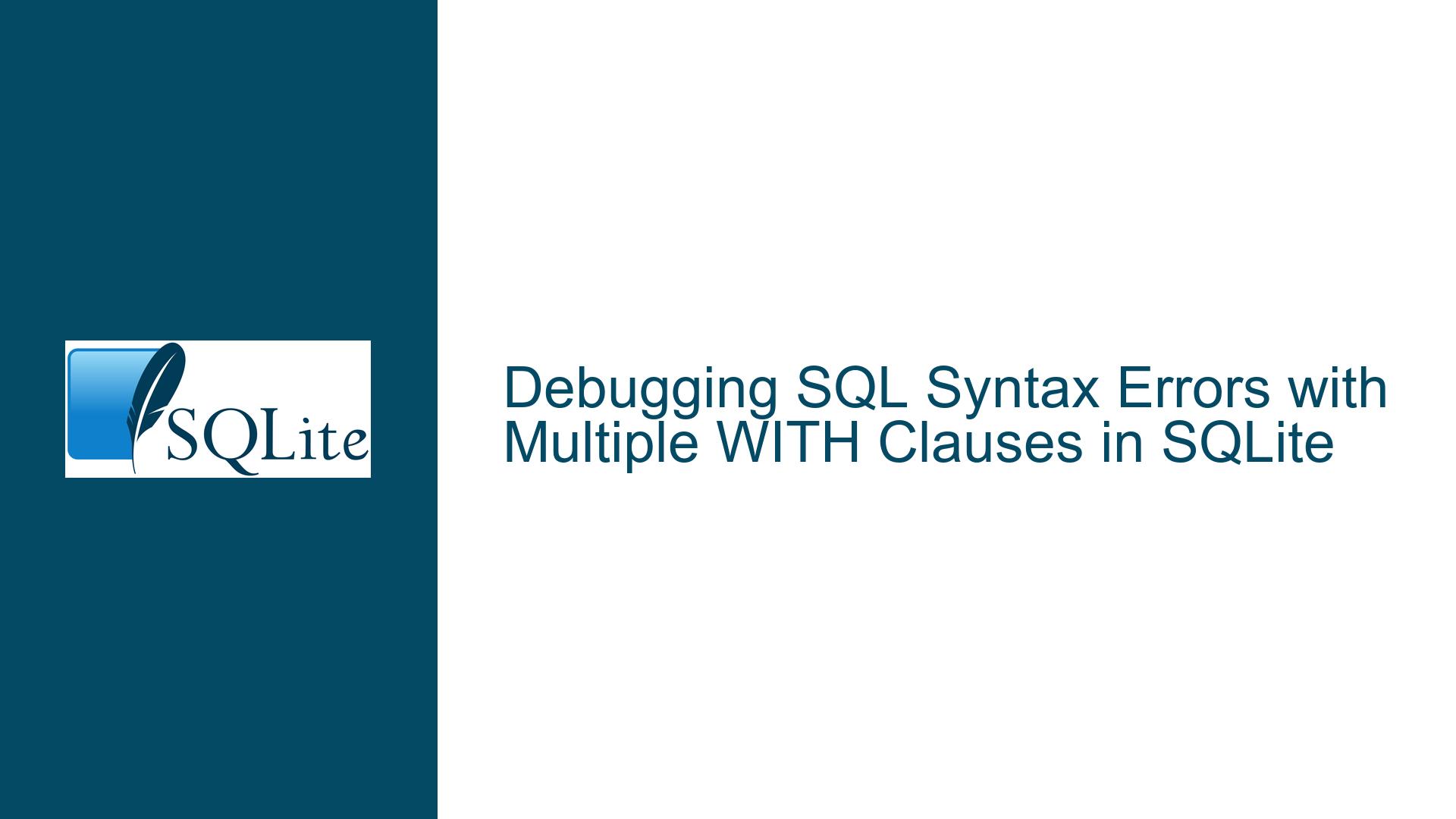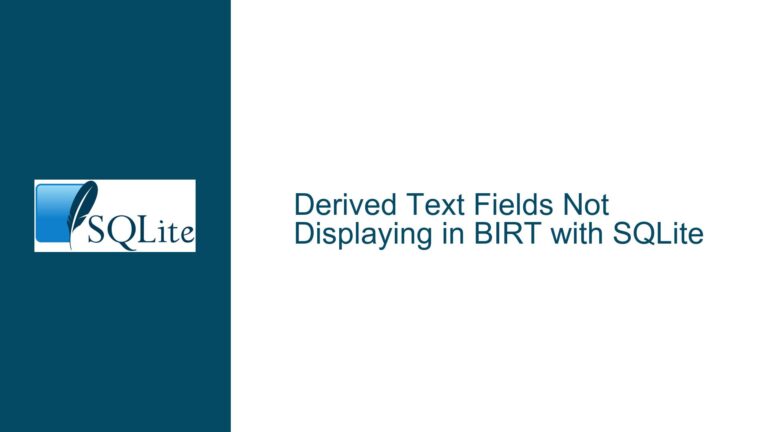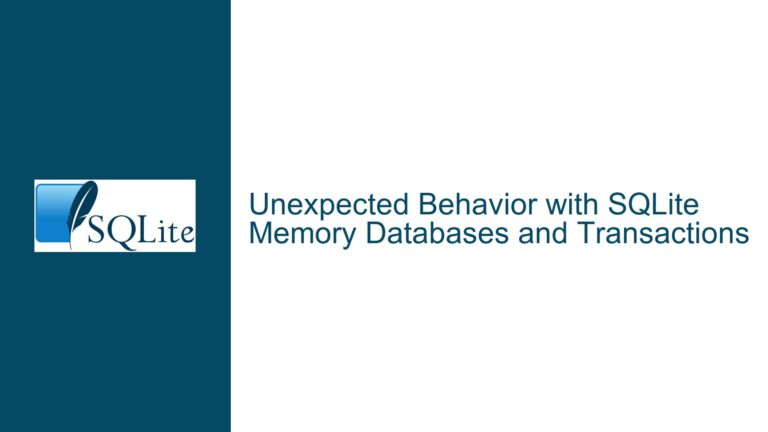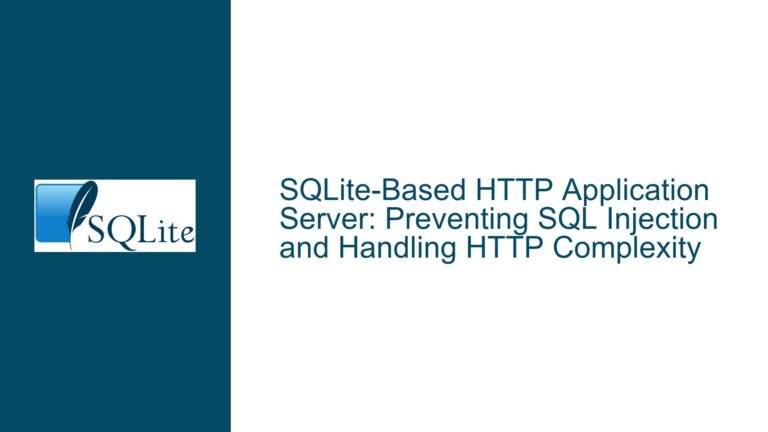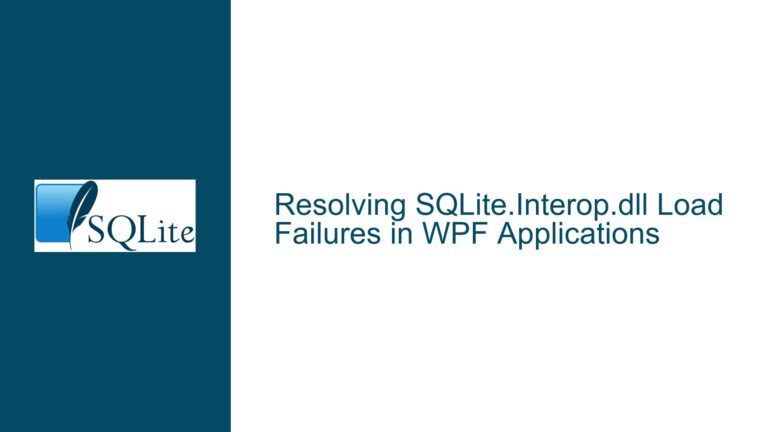Debugging SQL Syntax Errors with Multiple WITH Clauses in SQLite
Understanding the Challenge of Debugging SQL Syntax Errors in Complex Queries
When working with SQLite, particularly in the context of complex queries involving multiple Common Table Expressions (CTEs) using the WITH clause, debugging syntax errors can be a daunting task. The issue becomes especially pronounced when the query contains several WITH clauses, and the error message provided by SQLite is vague, such as "Syntax error near WITH." This lack of specificity in error reporting can lead to significant time spent manually inspecting each WITH clause to identify the exact source of the problem.
The challenge is further compounded by the fact that SQLite, like many other relational database management systems, does not always provide precise location information for syntax errors. This is particularly true in versions prior to SQLite 3.38.0, where the error messages were less detailed. The introduction of the sqlite3_error_offset interface in SQLite 3.38.0 marks a significant improvement in this regard, as it allows developers to pinpoint the exact location of syntax errors within their queries.
However, even with this new feature, developers may still encounter situations where the error message does not provide enough context to quickly resolve the issue. This is especially true when dealing with queries that generate dynamically constructed SQL, such as those produced by a Domain-Specific Language (DSL) for search functionality. In such cases, the complexity of the generated SQL can make it difficult to trace the origin of the error back to the original DSL construct.
Exploring the Causes of Ambiguous Syntax Errors in SQLite Queries
The primary cause of ambiguous syntax errors in SQLite queries, particularly those involving multiple WITH clauses, is the lack of detailed error reporting in earlier versions of SQLite. Prior to SQLite 3.38.0, error messages often provided only a general indication of where the problem might be, such as "Syntax error near WITH." This lack of specificity forced developers to manually inspect each WITH clause to identify the exact source of the error.
Another contributing factor is the complexity of the queries themselves. When dealing with dynamically generated SQL, the queries can become quite lengthy and intricate, making it difficult to trace the origin of a syntax error. This is especially true when the queries are generated by a DSL, as the translation from the DSL to SQL can introduce subtle issues that are not immediately apparent.
Additionally, the use of multiple WITH clauses in a single query can exacerbate the problem. Each WITH clause introduces a new CTE, and if any of these CTEs contain syntax errors, it can be challenging to determine which one is causing the issue. This is particularly true when the CTEs are interdependent, as an error in one CTE can propagate through the entire query, making it difficult to isolate the root cause.
Strategies for Identifying and Resolving Syntax Errors in SQLite Queries
To effectively debug syntax errors in SQLite queries, particularly those involving multiple WITH clauses, developers can employ several strategies. The first and most straightforward approach is to take advantage of the new sqlite3_error_offset interface introduced in SQLite 3.38.0. This interface provides precise location information for syntax errors, allowing developers to quickly identify the exact point in the query where the error occurs. By using this feature, developers can significantly reduce the time spent manually inspecting each WITH clause.
Another useful technique is to intentionally introduce variations in the spelling of the WITH keyword within the query. For example, by using different display texts such as "With," "WIth," "WiTH," or "wiTH," developers can force SQLite to provide more specific error messages. This approach works because SQLite will flag the misspelled WITH keyword as the source of the error, thereby pinpointing the problematic CTE. While this method may seem unconventional, it has proven to be an effective way to isolate syntax errors in complex queries.
In cases where the query is dynamically generated by a DSL, it is often helpful to examine the generated SQL code directly. By reviewing the SQL output, developers can identify any discrepancies or issues that may have been introduced during the translation process. This can be particularly useful when dealing with complex queries, as it allows developers to trace the origin of the error back to the original DSL construct.
Finally, developers should consider breaking down complex queries into smaller, more manageable pieces. By isolating individual WITH clauses and testing them independently, developers can more easily identify the source of any syntax errors. This approach not only simplifies the debugging process but also helps to ensure that each CTE is functioning as intended before being integrated into the larger query.
In conclusion, while debugging syntax errors in SQLite queries can be challenging, particularly when dealing with multiple WITH clauses, there are several strategies that developers can employ to streamline the process. By leveraging the new sqlite3_error_offset interface, intentionally introducing variations in the WITH keyword, examining dynamically generated SQL, and breaking down complex queries into smaller pieces, developers can more effectively identify and resolve syntax errors, ultimately improving the reliability and maintainability of their SQL code.
